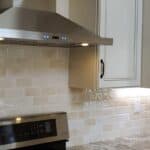What is an Infrared Grill and How do They Work? Is there any infrared grill disadvantages?
Infrared grills, often known as IR grills, cook your food using infrared radiation. To do this, a standard gas grill is fired up, then a customized plate is placed on top to serve as a cooktop. The heat from the grill is distributed evenly throughout the plate by the heatwaves that pass through it.
An infrared grill, rather than just hot air, creates infrared waves. These waves are responsible for heating an object’s surface, such as a slab of meat. Infrared grills are known for having a quick heat-up time since their plates are engineered to transfer heat.
These grills function similarly to the sun. The sun’s energy is around 50% infrared, which explains why, in the summer, roadways are quite hot to the touch, yet we can’t see the heating process. Planning to buy best infrared grill? We have recommendation for you.
Infrared Grill Disadvantages
IR grills may sound like a chef’s dream come true, but there are some infrared grill disadvantages. The following factors may cause most chefs to reconsider their decision to purchase an infrared grill:
The majority of infrared grills heat up too quickly, resulting in burned food. Although the high temperatures they can achieve are a bonus, if you are the type of person who appreciates taking their time with food, IR grills may be too much for you. Burning food is a significant concern, and many IR grill cooks find a steep learning curve when it comes to food preparation.
Most infrared grills have a limited range of applications. A normal infrared grill doesn’t have a very wide temperature range, and it also doesn’t provide you much control over how fast your food cooks. This implies that some cuts of meat and varieties of meat will not work well with this grill.
Many infrared grills are also prone to cracking. IR grill plates may appear to be durable, but many reviews complain that they are prone to chipping and cracking. According to several evaluations, these grills are also more prone to mechanical failure.
When it comes to compactness and portability, infrared grills fall short. They were created with efficiency in mind for commercial kitchens. Despite the fact that the new IR home grills are smaller, they are still heavier and less portable than the majority of gas and charcoal grills on the market.
If you like the taste of wood or charcoal, you’ll be dissatisfied. Although this is a matter of personal opinion, it is still a drawback for those who enjoy seeing smoke rings in their BBQ. You won’t get that kind of flavoring because it’s a gas-powered barbecue.
When compared to traditional gas, coal, and wood-burning grills, IR grills are also infamously pricey. So, if you’re looking for a low-cost barbecue, go no further.
Infrared Grill Disadvantages: Not Very Versatile
Although an infrared grill has the potential to improve your steak cooking skills, most people believe that’s all it can do. The grill can be tough to grasp when it comes to the time-temperature relationship because of the insanely high temperatures it can attain.
Furthermore, it does not provide the same low temperatures as a standard gas or charcoal barbecue. Other types of grills may go as low as 100 degrees Fahrenheit on the low end, which is ideal for slow cooking meats, however an infrared grill can only go as low as 250 degrees Fahrenheit. As a result, delicately cooked meals like fish and vegetables cannot be cooked on an infrared grill.
Infrared Grill Disadvantages: Heavy and Immobile
Traditionally, infrared grills were developed for commercial kitchens to provide an efficient and consistent grilling surface for steaks and other foods. As a result, they weren’t designed to be lightweight or portable.
Although smaller, the current generation of IR grills for the home are still not as light and portable as we’ve come to expect from our gas and charcoal grills. The infrared plates are designed to be heavy, and even the ‘portable’ versions are still heavy and not designed to be moved between cooking locations or used as a camp barbecue.
Infrared Grill Disadvantages: Expensive
Traditionally, infrared grills were developed for commercial kitchens to provide an efficient and consistent grilling surface for steaks and other foods. As a result, they weren’t designed to be lightweight or portable.
Although smaller, the current generation of IR grills for the home are still not as light and portable as we’ve come to expect from our gas and charcoal grills. The infrared plates are designed to be heavy, and even the ‘portable’ versions are still heavy and not designed to be moved between cooking locations or used as a camp barbecue.
Our latest articles
- 15 Adorable Mugs Every Animal Lover Needs
- Music Myths Busted: What You Never Knew About Sound
- 8 Unique Insights into Running Gear and Innovations
💻Best Infrared Grills on Amazon| Wifi Pellet Grills |Guide to Grilling Steak
Was this helpful?
Hi there! I’m a food enthusiast and journalist, and I have a real passion for food that goes beyond the kitchen. I love my dream job and I’m lucky enough to be able to share my knowledge with readers of several large media outlets. My specialty is writing engaging food-related content, and I take pride in being able to connect with my audience. I’m known for my creativity in the kitchen, and I’m confident that I can be the perfect guide for anyone looking to take their culinary journey to the next level.







